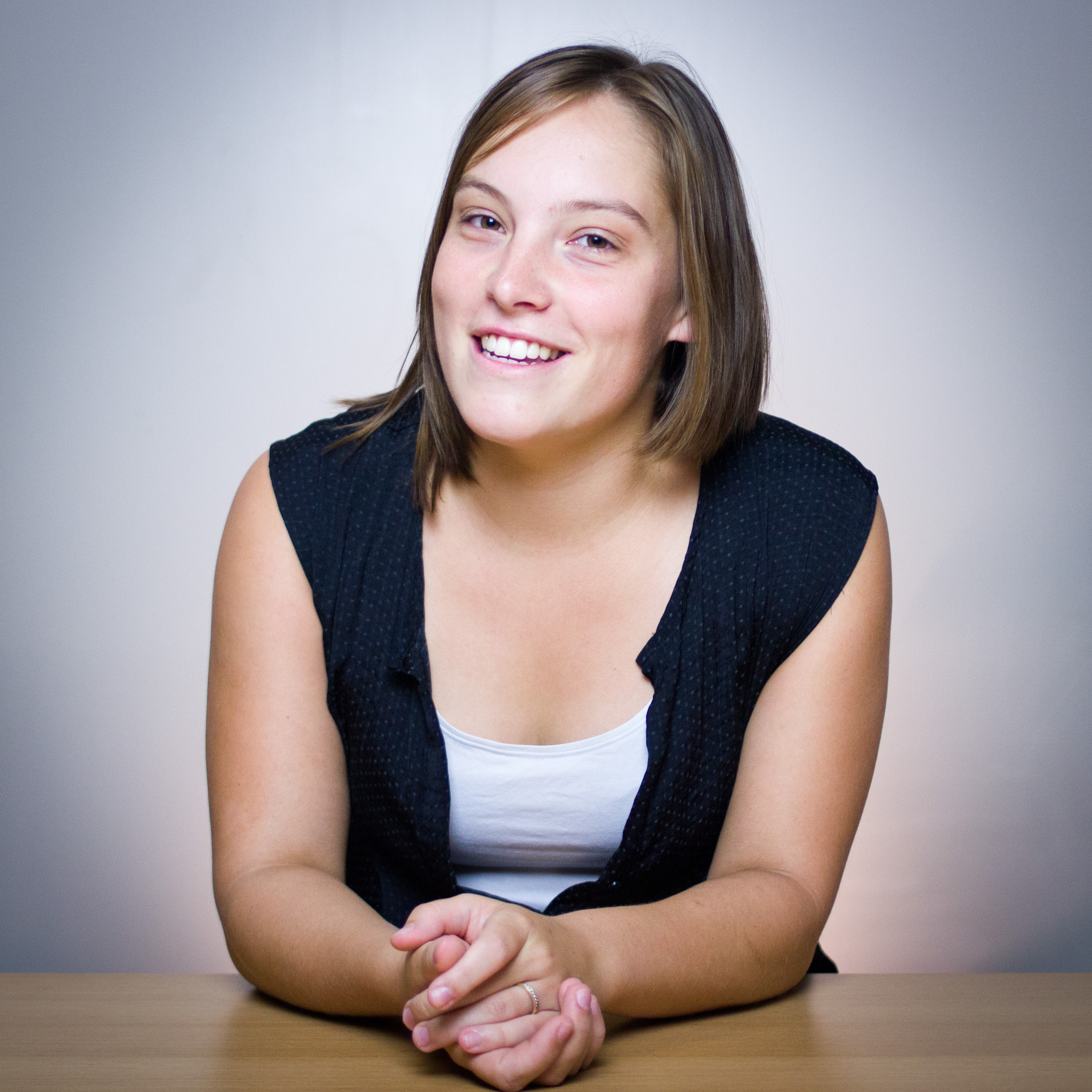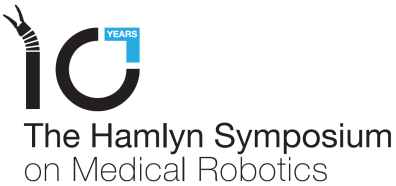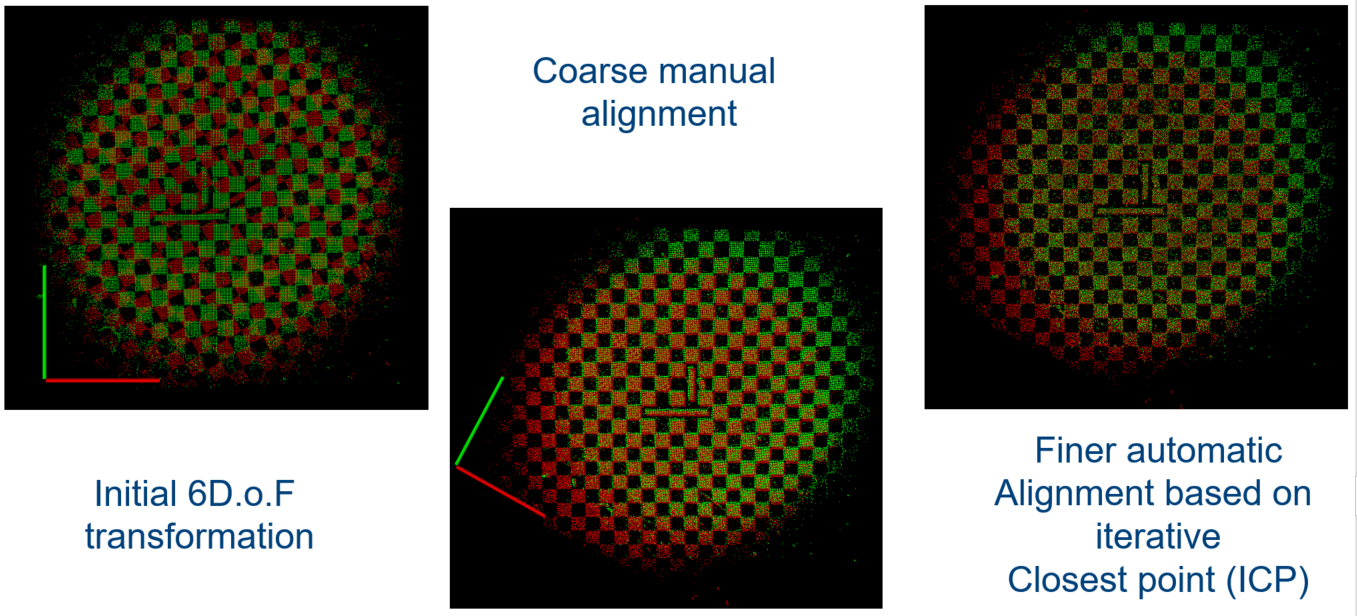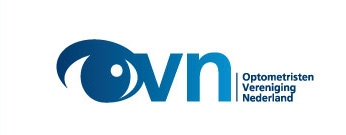News
Thanks for the many hits and interest - we move to a static website
Dear visitor,
Many thanks for the many hits and interest over the last years - we are move to a static website !
But feel free to directly contact the PI's ... to follow up the latest !
E. Vander Poorten,
Advances In Image-Guided Opthalmic Interventions
EurEyeCase co-organises the 2nd workshop on Advances in Image-Guided Opthalmic Interventions
EurEyeCase co-organises the workshop, speakers from MLL and ACMIT will report on their experiences working towards in-vivo validation of sensor-based robot-assisted vitreoretinal interventions.
More info on the workshop can be found here.
The agenda of the day can be found below.
Best Presentation Award
Matteo Cereda was awarded the gold medal as the best presentation for his talk on EurEyeCase's animal and human trial at the Italian Group of Vitreo-Retina Specialists.
Congrats Matteo !!

Real-time distance measurement for retinal surgeries are validated in world’s first clinical validation at Rotterdam Eye Hospital
Eindhoven, 21 February 2018 – Preceyes B.V. (Eindhoven, the Netherlands) and partners developed and integrated a distance sensor in Preceyes’ robot. The sensor measures the distance of an instrument from the retina in real time. The integrated device has been successfully used in a world’s first clinical validation at Rotterdam Eye Hospital (Rotterdam, the Netherlands). Providing sensor-based safety and guidance, the robot-sensor combination promises significant safety and performance benefits for retinal surgery. Moreover, the sensor will be a source of data for training and evaluation. Read more
Newly accepted papers from ETHZ
The following pair of papers, led by ETHZ were accepted for publication at RA-L and CVPR respectively
'Automatic Tool Landmark Detection for Stereo Vision in Robot-Assisted Retinal Surgery'
was accepted at Robotics and Automation Letters/ICRA 2018. This paper presents the pipeline used on Eureyecase for calibration of the stereo-microscope, and 3D reconstruction. By using the robot coordinates to calibrate and reconstruct, we get rid of checkerboards and unnecessary equipment. Registration, reconstruction, and calibration are all solved in a single pipeline. The project is an outcome of collaboration between ETHZ and KUL, and achieves ~100μm accuracy in 3D reconstruction of the retina. Video at http://www.vision.ee.ethz.ch/~kmaninis/keypoints2stereo/.
'Deep Extreme Cut: From Extreme Points to Object Segmentation'
from ETHZ was accepted at CVPR 2018 : https://arxiv.org/pdf/1711.09081.pdf.
The paper studies alternative methods for annotating new segmentation datasets by using extreme clicks, instead of full pixel-level annotations that are expensive to obtain. The method can be used to efficiently label medical datasets as well.
Animal trials to evaluate EurEyeCase research platform

- investigate the functionality of each component;
- receive preliminary input on the functionality of the OCT measurements – prior to transition to human experiments;
- gather a unique and rich data-set with clinically relevant in-vivo (closed eye) data of force, OCT and stereo.
Results are currently under analysis but a large number of technologies developed within EurEyeCase project have already been validated in-vivo.

Rozemarijn Weijers wins IMDI talent award
Rozemarijn Weijers, former student at Eindhoven University of Technology, has won the IMDI Talent Award 2016-2017. She wrote an algorithm for a sensor, so that an eye surgery robot together with the eye surgeon obtain a better view in the eye. The goal is to make eye operations faster and safer, but also to enable new interventions on a microscopic level.
|
|
Preceyes, a start-up of Eindhoven University of Technology, has developed an eye surgery robot. This system must assist the eye surgeon with difficult and risky procedures. Examples of this are recovery of retinal detachment, peeling of the retina where scar tissue is removed, the injection of drugs into the blood vessels of the retina and the removal of vitreous from the eyeball, the so-called vitrectomy. In all these operations, the eye surgeon must be able to work vibration-free. The robot, a master slave system that is controlled by a joystick, can be an important assistant.
OCT-Sensor
To give the robot and surgeon a better view, the surgical instrument has a light sensor on its tip. But this OCT sensor only provides information along the same line in depth. As a master student of both Mechanical Engineering and Biomedical Engineering at Eindhoven University of Technology, Rozemarijn Weijers (26) studied the possibility of making 2D images of it. `I first made a simulator to better understand the reflective OCT signal. Then the positions of the robot during movement combined with the many lines that the sensor then delivers. You can make 2D images of this. In order to also be able to recognize structures, such as retinal layers and blood vessels, I have written an algorithm.’
|
European Robotics Week
The EurEyeCase project was invited to present the latest advances in the European Robotics Week (ERW) the 20th of November 2017. EurEyeCase participated in the Health Robotics session, at the European Committee of the Region, Brussels. This initiative aimed to bring robotics research closer to the public. During this session, other research groups and companies were also involved, such as:
Murab projet, SoftPro project, Imec.WONDER & Imec.ROBOCURE, BabyRobot’s, Brubotics/VUB Exoskeleton project or Endoo European Project.
Below you can find some pictures of the event:
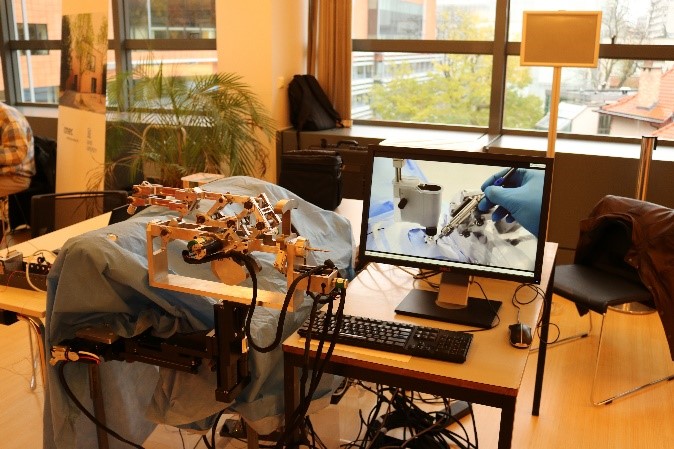 |
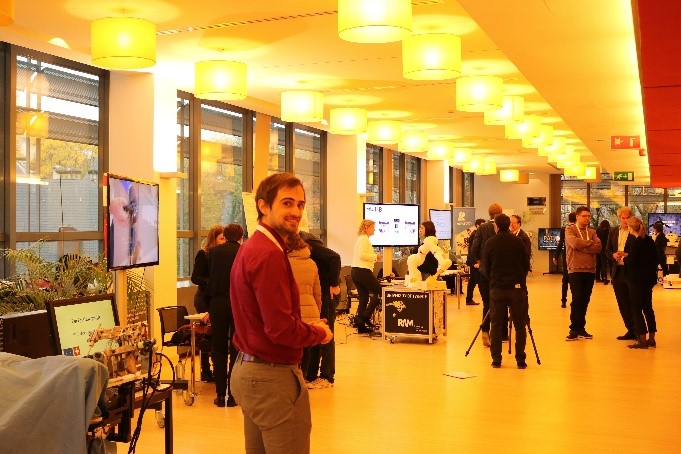 |

Research file submitted to the Ethical Committee
|
The Rotterdam Ophthalmic Institute has submitted the research file to the Ethical Committee for the first EurEyeCase clinical trial! For this study, titled 'EurEyeCase-Clinical Trial – Validation of the EurEyeCase_CT system for robot-assisted retinal surgery', Koorosh Faridpooya, vitreoretinal surgeon at the Rotterdam Eye Hospital, will act as the principal investigator. |
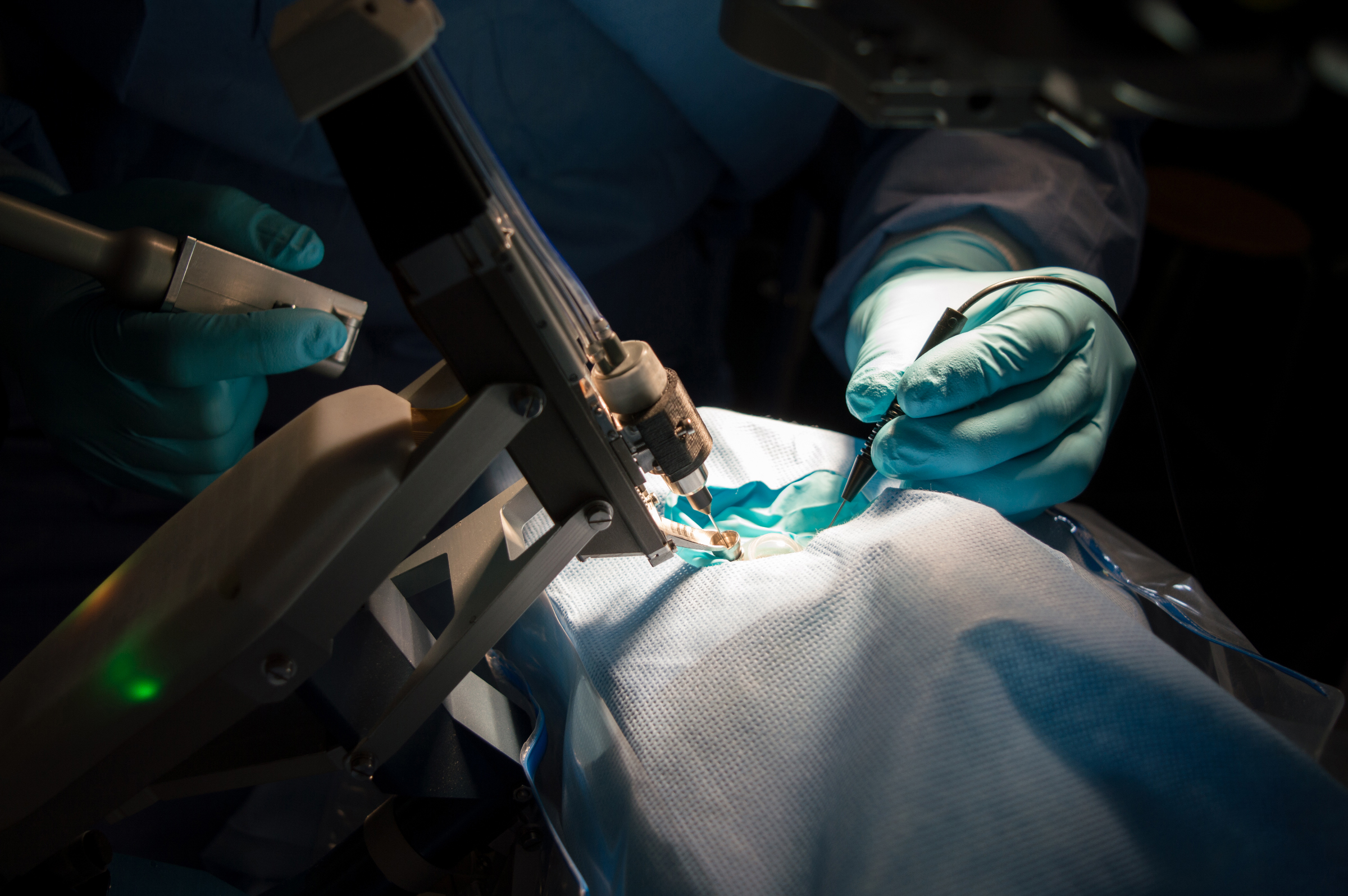 |
Best Paper Award for the ACMIT group at the 5th IEEE International Work Conference on Bioinspired Intelligence (IWOBI 17) Conference
At the IWOBI 2017 - 5th IEEE International Work Conference on Bioinspired Intelligence /July 10-13, 2017 - Funchal, Madeira Island/, the ACMIT team (M. Kozlovszky, R. Dóczi, E. Jósvai and G. Kronreif) has been awarded with the Best Paper Award. In his presentation, Miklos Kozlovszky explained the results of their research within the EurEyeCase project. The paper was focusing especially the novel work on the use of an automatic event handling software framework, which can be used effectively during robot assisted eye surgery.
ECBO 2017 – Newest results in research on ultra-thin long range optical distance sensors
The Medizinische Laserzentrum Lübeck presented the latest results on the recently developed high precision optical distance sensor at the European Conference on Biomedical Optics. The presented poster “Long working distance OCT-probes for robot-assisted eye surgery” addressed the conformity between the simulation routine and built probes, possible aberrations resulting from the small aperture and the general measuring performance [poster]. Despite the small diameter no significant influence on axial resolution or signal quality has been found, while yielding a measuring range in the centimeter regime. Therefore the first lot of probes has been produced, which gets the EurEyeCase team closer to a clinical evaluation.
Talk at the Hamlyn Symposium Workshop 2017
|
On June 28, Gerrit Naus of Preceyes gave an invited talk at the Hamlyn Symposium Workshop Surgical Robotics: First in Human, which was organized in conjunction with the Hamlyn Symposium on Medical Robotics in London, UK. The talk of Gerrit addressed the developments of Preceyes leading to the world’s first robot-assisted eye surgery in Oxford University Hospital in 2016 and Preceyes’ research activities that are targeting broader application by sensor-enhanced assistance. The importance of EurEyeCase as a crucial research track in these activities has been emphasized and detailed along Preceyes’ development roadmap. The program of the workshop as well as the program of the full conference are available here: http://hamlyn.doc.ic.ac.uk/hsmr/surgical-robotics-first-human-what-does-it-take. |
|
Development of a new registration method, submitted to CRAS 2017
As severe retinal damages can be caused by undesired collisions between surgical tools and the retinal wall, it is important to develop tracking tool methods with good distance perception to the retina. This tool tracking is only possible if the different positions of the instrument (i.e., needle) in the operating room are known, with respect to the stereo-microscope and to the robot.
|
|
To reach this aim, a new registration method has been developed. It is based on information of the OCT-fiber probe and the stereo-microscope iOCT scanner (intraoperative optical coherence tomography), and on purposefully designed algorithms. The first experimental tests show very promising results, as clearly visible in the figure below. The methodology and its experimental evaluation have been submitted in the 7th Joint Workshop on New Technologies for Computer/Robot Assisted Surgery. Now hoping to present this work with more details in September!
|
Convolutional Oriented Boundaries: From Image Segmentation to High-Level Tasks
The Rotterdam Eye Hospital and Preceyes work together to develop an surgery robot for eye surgery
The Rotterdam Eye Hospital and Preceyes have signed a strategic agreement for clinical development and application of a surgery robot. The purpose is to use the robot in retinal surgery to help patients more accurately and safely in the future. The robot also allows new treatments that can help with a better treatment of retinal diseases.
The full press release could be find here.
Best Junior Presentation Award for Yanick Douven at the 36th Benelux Meeting
EurEyeCase v2 software integration meeting in May
The meeting took place on Thursday 18 May 2017 with developers from TU/e, KUL, ETHZ, OPMed, and ACMIT at ACMIT HQ, in Wiener Neustadt, Austria.
|
|
The EurEyeCase v2 software meeting was not only fruitful but also interesting. The participating developers have good opportunity to exchange knowledge on different image processing topics. The meeting has successfully achieved the following major goals:
During the summer period the EurEyeCase V2 software will be further developed to enable the planned animal trials with the system around October 2017. |
New features for iOCT.

iOCT examples are illustrated in the figure: the left image shows 3D iOCT, a top view photo and live iOCT during DMEK surgery. The thin Descemet membrane is clearly visible in the anterior segment of the eye. Right next to it the 3D iOCT, a top view photo and live iOCT shows the Retina during membrane peeling.
Talk at Symposium BME 2017
|
On June 6, Maarten Beelen from Preceyes will give a talk at the Symposium BME 2017, in Eindhoven, The Netherlands. The conference entitles ‘Robots & Doctors join hands’. The talk of Beelen, titled ‘A new robot for Eye surgery’ will address the Preceyes system and ongoing developments within EurEyeCase. The program of the conference is available https://www.protagoras.tue.nl/symposium/speakers. |
 |
Welcome to Maria and Dario !
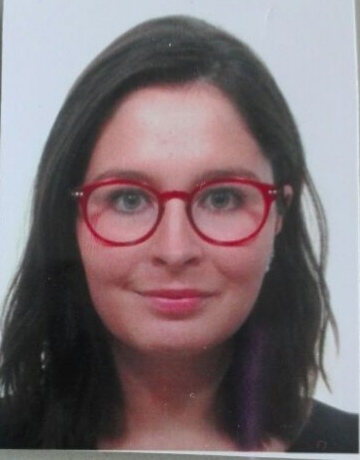 |
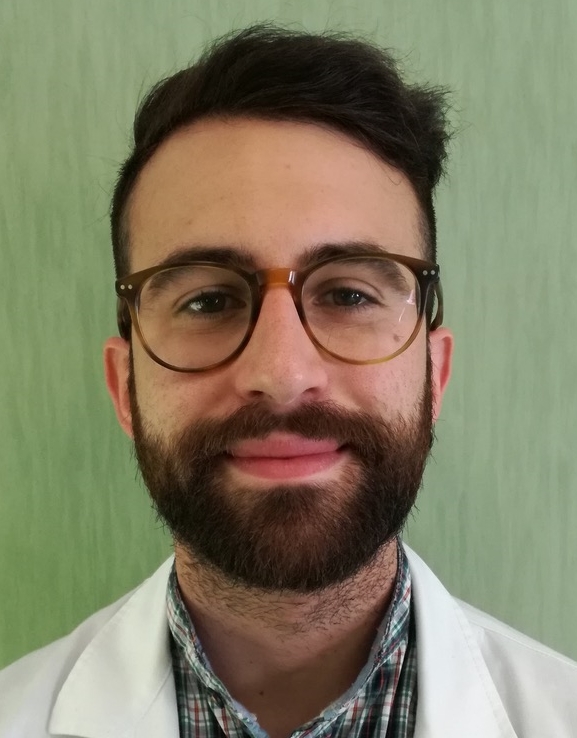 |
Doctors Maria Belotti and Dario Nizza, orthoptists, have just joined the team that works on EurEyeCase in Milan. They are working on the procedure that will lead to the first clinical trial employing tele-manipulation robot coupled with proximity sensors in humans. |
Development of an ultra thin long range optical distance sensor for medical robotics navigation
|
In cooperation with partners of the EurEyeCase consortium, the Medical Laserzentrum Lübeck developed a high precision optical distance sensor with a diameter twice the thickness of a human hair. Placed in a 30 gauge needle, it can be used for first clinical tests inside the EurEyeCase consortium. |
CRAS 2017 - Workshop on New Technologies for Computer/Robot Assisted Surgery - Call for papers
|
|
The 7th Joint Workshop on New Technologies for Computer/Robot Assisted Surgery (CRAS 2017) will be held in Montpellier, France, on September 14-15, 2017: https://www.cras-eu.org/. Deadline for submission of extended abstracts: June 2, 2017. Looking forward for your massive contributions and see you in Montpellier! |
Thomas started working with ETHZ
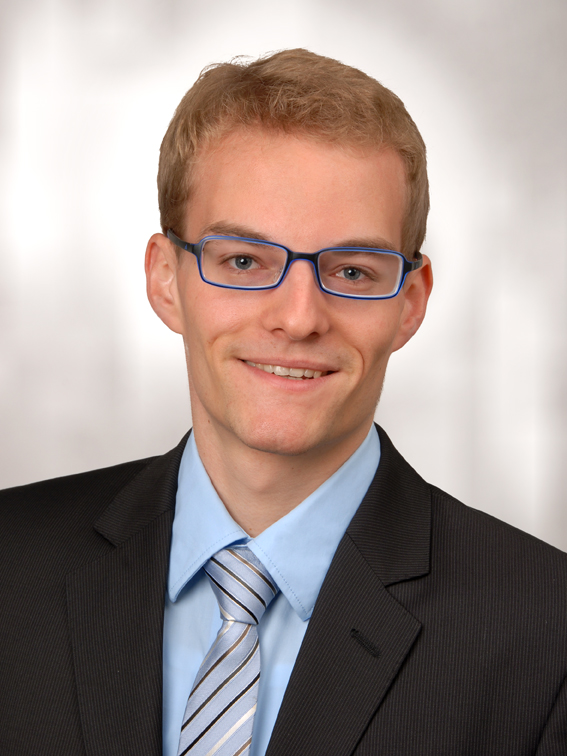 |
Thomas Probst (PhD candidate) started working together with the ETHZ group. His work will focus on registration and pose estimation from the stereo-microscope. Welcome Thomas! |
Lecture at OVN
|
|
At the annual conference of the Dutch Optometrist Society (OVN), February 12-13 in Den Bosch, The Netherlands, Koorosh Faridpooya gave a lecture about ‘Robot surgery in ophthalmology’. In this presentation, he discussed his vision on the future role of robot-assisted vitreoretinal surgery, the systems that are being developed within the EurEyeCase-project and the progress that was made during the past two years. |
EurEyeCase v1.0 Software refactoring and preparation for the clinical trials has been started
After two recent successful events (namely the experimental campaign and the second year project review) the refactoring phase of the EurEyeCase Guiding software version 1 has been started. The feature requests received from the medical experts have been already incorporated in the new release and we are ready to move to the further planned steps. Beside the code refactoring the developer team is focusing now on the documentation for the clinical trials. The next few months will be challenging as the time is ticking fast and the preparation for the ethical approval is approaching.
Submission at JMRR
A general paper about "Single Scan OCT-based Retina Detection for Robot-assisted Retinal Vein Cannulation" by Gianni Borghesan, Laure Esteveny, Hinnerk Schulz-Hildebrant, Peter Koch, Dominiek Reynaerts and Emmanuel Vander Poorten, from KUL and MLL, has been submitted to the Journal of Medical Robotics Research.
Talk at ERF 2017
|
|
On Friday 24th of March, Gianni Borghesan from the mechanical department of KU Leuven will give a talk at the European Robotics Forum 2017, held at Edinburgh - Scotland (more details available at http://www.erf2017.eu/), in the workshop “Robotic surgery in the European researcher community”. His talk on "Robot-assisted vitreo-retinal surgery via sensor-integrated instruments" will be about ongoing research activities and preliminary results obtained within EurEyeCase project. |
Talk at Ramses 2017
On Saturday the 4th of March 2017, Maarten Beelen form Preceyes gave a talk at the Ramses meeting in Maastricht, The Netherlands. This conference concerns multispecialty robotic microsurgery. The talk of Beelen, titled ‘A new robot for Eye surgery’ addressed the Preceyes system and ongoing developments within EurEyeCase. News coverage of the conference, including a demonstration with soccer robots, is available https://limburg.bbvms.com/view/website/2769058.html.
EEC force sensing cannulation picked up by recent review by JHU
The force sensing cannulation technology further developed in EEC has already been picked up by the latest review paper on the subject by Johns Hopkins University. The paper "Robotic Vitreoretinal Surgery" by Channa et al. is online available through https://www.ncbi.nlm.nih.gov/pubmed/27893625.
Successful second year review meeting at Leuven
After two years of intensive work and collaboration between all partners, the EurEyeCase team successfully demonstrated their main achievements to the European Commission during the 2nd year review meeting on 8th of March 2017 in Leuven. While during the first year the emphasis was very much on develop the different components (more details available on https://www.eureyecase.eu/about/publications), a fully integrated platform - i.e composed of robot, instruments, supervising software, OCT and stereo-vision - was the result of the 2nd year. All these efforts form a strong basis to progress the project towards new research topics and clinical validation. Indeed in the third year of the project, focus will shift towards the work by the clinical partners, who, tightly collaborating with the technical partners, will validate in great detail the different technological tools.

